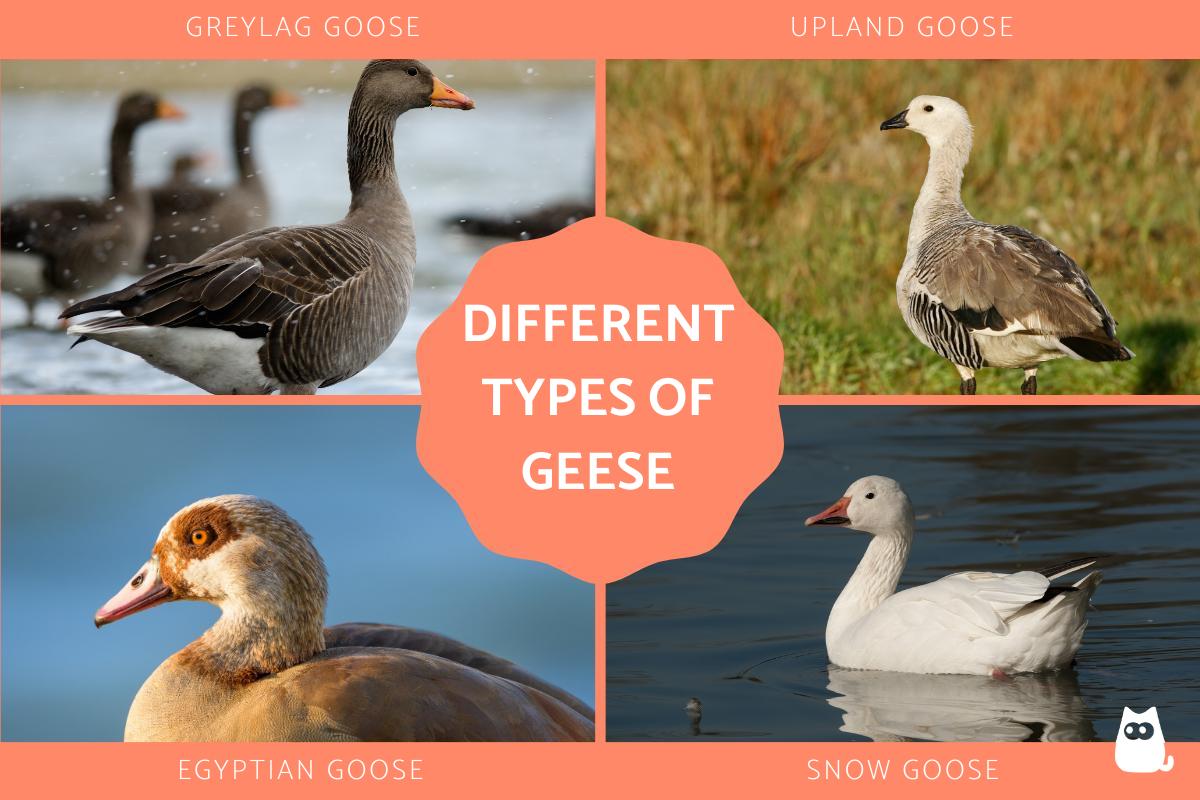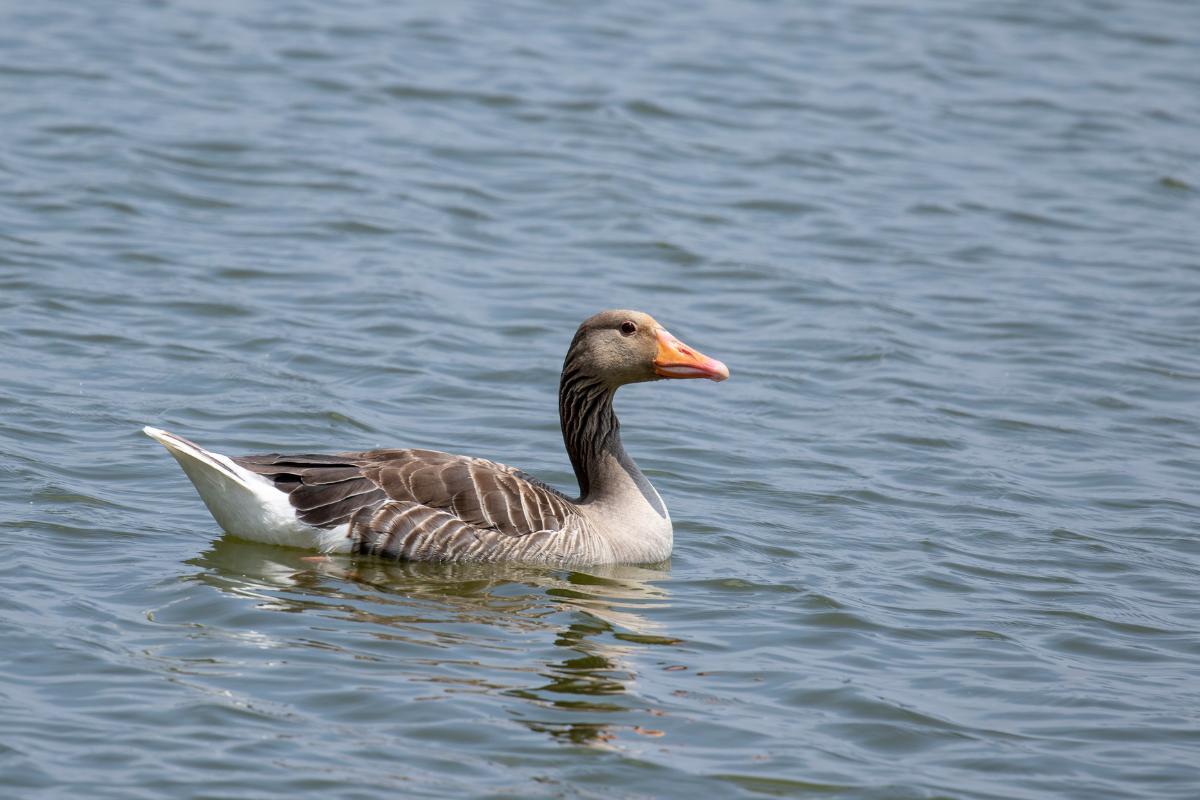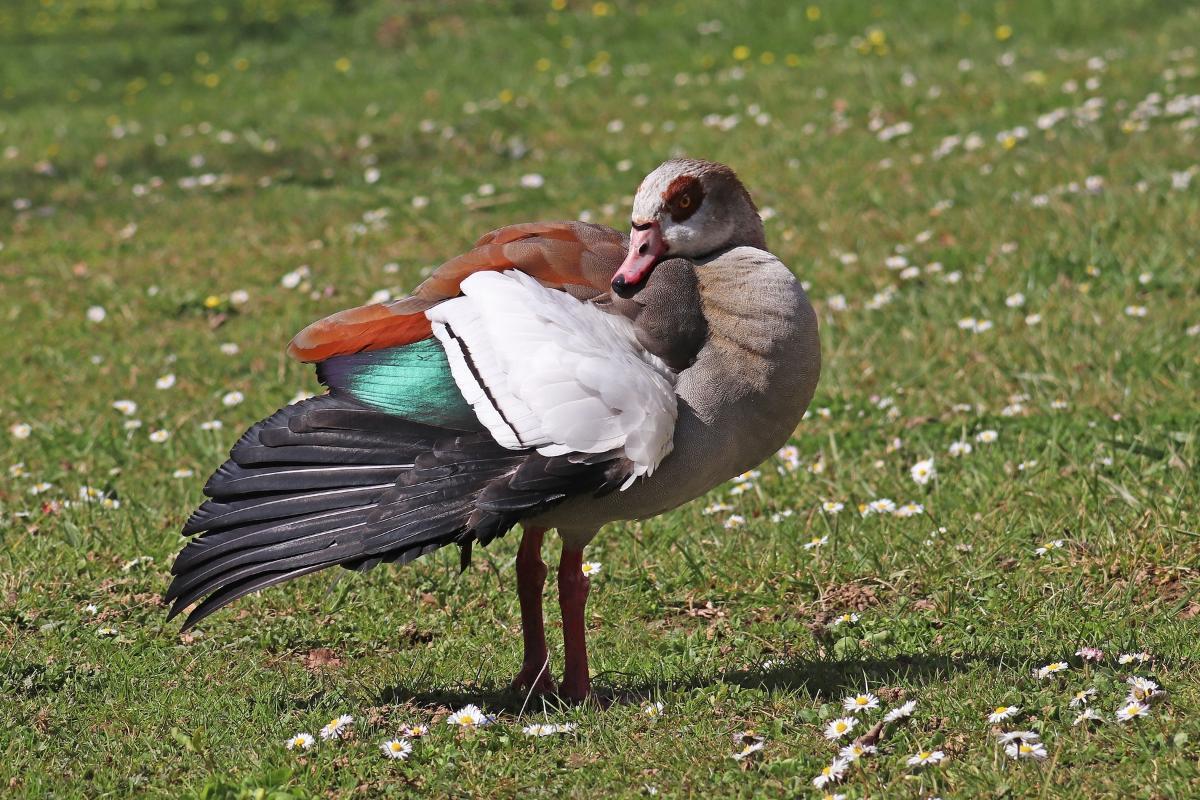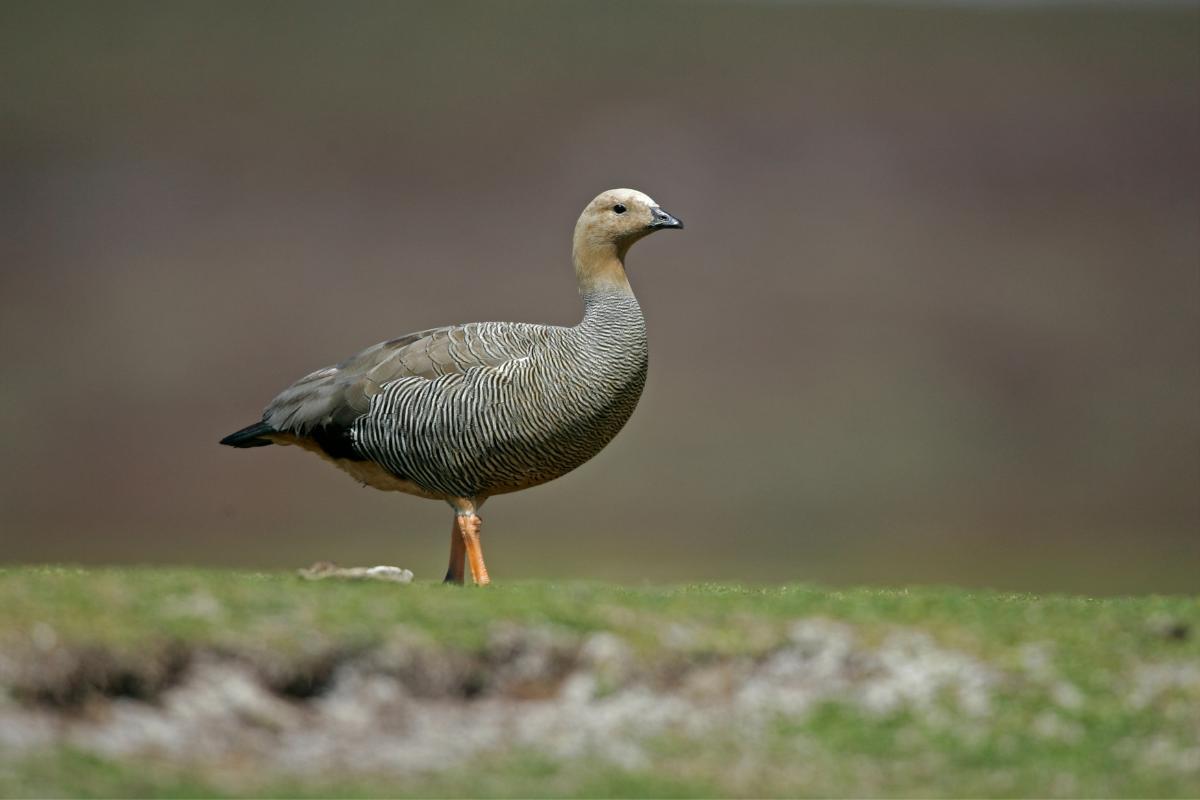Different Types of Geese


The different types of geese can be loosely categorized as true geese and other birds which have the word ‘goose’ in their common name. All geese are types of waterfowl belonging to the family Anatidae. They are known for their graceful morphology and migratory behavior, among many other characteristics. Geese of all types are distributed in a variety of environments around the world, all of which are close to bodies of water. Many geese species have adapted to various climates, ranging from icy extremes to temperate tropical areas.
AnimalWised helps you to learn more about these fascinating waterfowl by presenting the different types of geese, both true geese and others. We learn the names of the different goose breeds relating to the domestic goose, as well as their characteristics and photos.
Geese classification
As mentioned in the introduction, geese are types of water birds which can be found in the family Anatidae. This family also includes ducks and swans, although many of the common names are variable. Although these different types of geese can be classified by various characteristics, such as size, the main distinction is the following:
- True geese: these are members of the subfamily Anserinae, mostly confined to the genera Branta and Anser. It also contains other types of waterfowl such as swans.
- Other geese: these geese are not found within the above genera, but have the word ‘goose’ in their common name.
Whether true geese or other, these birds can be native or foreign to their various habitats. This will depend on the time of year, since nearly all geese are migratory. However, there are some reports of certain geese species becoming more sedentary. This could be due to various factors, but there are reports of climate change affecting the migratory patterns of certain birds[1].
We look at some of the individual goose species in the sections below:
Greylag goose (Anser anser)
The greylag goose is one of the most iconic species of waterfowl found in Europe and parts of Asia. This species is characterized by its graceful bearing and impressive wingspan. They can measure up to one meter in length and reach a wingspan of up to two meters. Its plumage is mostly pale grey, with a black head and neck. They also have a distinctive paler pattern on the breast. They are easily identifiable by their bright orange feet and beaks.
Migratory patterns of greylag geese are an impressive spectacle of nature. During the spring and fall, these birds embark on migratory journeys that can span thousands of miles between their breeding grounds in more northerly latitudes and their wintering grounds in warmer regions. During these trips, the geese form impressive ‘V’-formations, allowing them to save energy and increase the efficiency of their flights.
Although the common goose is a relatively abundant species, it faces threats such as habitat loss and illegal hunting in certain areas. It is important to highlight the need to conserve and protect the natural habitats of these migratory birds, as well as promote sustainable practices to guarantee their survival and wellbeing.
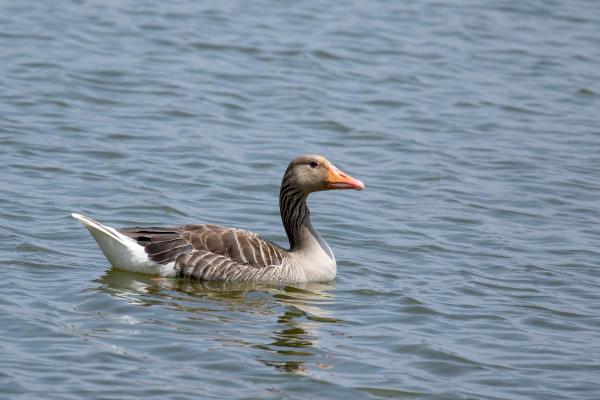
Canada goose (Branta canadensis)
The Canada goose is a species of aquatic goose native to North America. Its distinctive plumage and its migratory behavior in massive flocks make it one of the most recognizable and admired birds in its natural habitat.
The Canada goose is one of the largest birds in North America, with a length of up to 1 meter and a wingspan that can reach 1.5 to 2 meters. Its plumage is mostly greyish, with a distinctive black head and neck. They also have a white patch on the throat resembling a collar. These aquatic birds have a highly social and gregarious behavior, forming large and organized flocks during their migrations and in their breeding areas.
The Canada goose is known for its spectacular migrations spanning astonishing distances. During the breeding season, these birds move from wintering areas in the south to breeding areas in the north, covering thousands of miles as they do so.
Although the Canada goose was threatened in the last century, it is currently considered a species of least concern in terms of conservation due to its stable population.
If you want to know more about the different types of goose around the world, check out our related article on the difference between geese, swans and ducks.

Snow goose (Anser caerulescens)
The snow goose is one of the most iconic species of goose found in the arctic and subarctic regions of North America. It is known for its distinctive white plumage on most of its body, except for their black wingtips. This helps them to blend perfectly with the snowy landscapes they inhabit for much of the year. There is also a type of light bluish gray plumage. Although once thought to be a different species, this is due to genetic variations of the species.
This species breeds in the vast arctic and subarctic tundras of North America, including parts of Canada, Alaska and Greenland. During the breeding season, snow geese nest in nearby wetland areas and lakes where they can find abundant food.
The snow goose is a migratory species of goose that travels amazing distances. During the summer, they migrate north to breed. In winter, they fly south in search of warmer conditions. Like other goose species, they gather in large flocks and use a ‘V’-formation during flight to reduce air resistance and conserve energy.
They feed mainly on vegetation, such as grasses and herbs. These are found in the wetlands and tundras which they inhabit. They may also consume seeds, bulbs and other parts of plants growing in their environment. Learn more about other types of herbivorous birds in our related article.
Although snow goose populations are not currently endangered, they face significant challenges due to climate change and habitat alteration. The loss of arctic tundra and diminished food resources may negatively affect their ability to breed and migrate successfully.

Egyptian goose (Alopochen aegyptiaca)
Despite their relationship to the country which provides their name, the Egyptian goose is not endemic to Egypt alone. They can be found in various parts of sub-Saharan Africa, as well as areas in the Middle East.
The Egyptian goose is notable for its unusual and attractive appearance. They reach about 70 cm in length and have a plumage that is mostly brown and beige. Parts of its body that have a darker tone, but their head and neck are noticeably lighter than the rest of their body. Another very distinctive feature is the brown patches around their eyes which almost appear red in certain lights.
Adapted to a variety of habitats, they live in lakes, rivers, and various areas near wetlands. This species of goose shows social and gregarious behavior, forming large groups and being especially active during sunrise and sunset. Its omnivorous diet includes aquatic vegetation, insects and small invertebrates.
The Egyptian goose has a special connection to Egyptian culture and history. In Ancient Egypt, this species was considered sacred and was associated with the goddess Isis. Their image appears in many works of art and hieroglyphics. Their presence in the watery areas of the Nile was highly valued for its perceived link to fertility and life.
Although the Egyptian goose is not endangered, its population may be threatened by habitat loss due to human development and wetland degradation. The conservation of these habitats is essential to ensure the survival of the Egyptian goose and other animal species dependent on them.

Upland goose (Chloephaga picta)
Also known as the Magellan goose, the upland goose is a species of great beauty that inhabits the southern regions of South America. Specifically, they live in Argentina, Chile and parts of the Falkland Islands and Tierra del Fuego.
Upland geese can reach an approximate length of 55 to 65 cm and a wingspan of around 110 to 120 cm. Males have mostly white plumage with black bars on the neck. Females exhibit browner tones, creating marked sexual dimorphism in this animal.
The Magellan goose inhabits wetland areas and aquatic areas such as estuaries in Patagonia and lowlands. They also live in forests, congregating in groups during the breeding season. Their diet is based on aquatic vegetation such as grasses and herbs that grow in wetlands. Throughout their life cycle, they form monogamous pairs and build nests near water. Females lay between 4 and 8 eggs that are incubated by both the male and female.
In their ecosystem, these types of geese play an essential role by controlling aquatic vegetation and serving as food for predators such as birds of prey and foxes.

Domestic goose (Anser anser domesticus)
The domestic goose is a species of goose which has been derived mainly from the greylag goose (Anser anser), but which also has some influence from the swan goose (Anser cygnoides domesticus). These animals have been selectively bred to create various breeds of domestic goose.
Although we know the domestic goose originates from these species, these origins are likely very ancient. The could have been domesticated as much as 4,000 years ago. Since domestic geese were originally bred as livestock, one of the most common traits encouraged by breeding was size. Larger birds could provide more meat, so domestic geese tend to be larger, although this depends on the breed.
Another factor in selecting specimens for breeding is related to fertility. Generally speaking, birds which laid more eggs were encouraged. Some can lay up to 50 eggs during a season.
Breeds of domestic geese
The following is a list of domestic goose breeds. Please bear in mind these breeds may have varying names depending on region and other factors:
- African Goose
- American Buff Goose
- Australian Settler Goose
- Bernese Goose
- Chinese Goose
- Embden Goose
- Sebastopol Goose
- Shetland Goose
- Toulouse Goose
- Steinbacher Goose
- Pilgrim Goose
- Roman Goose
- Tufted Roman Goose
- Saddleback Pomeranian Goose
- Pilgrim Pomeranian Goose
- West of England Goose
- African Toulouse Goose
- Brecon Buff Goose
- Pilgrim African Goose
- French Toulouse Goose
- Cereopsis Goose
- Brown Chinese Goose
- Pilgrim Chinese Goose
- Rhine Goose
- Rhinelander Goose
- Dutch Hookbill Goose
- Czech Goose
- White Chinese Goose
- Pilgrim Toulouse Goose
- Danish Goose
Other types of geese
Although we have described in detail some of the most common different types of geese, there are many more geese species in the world. They include:
True geese
- Greater white-fronted goose (Anser albifrons)
- Emperor goose (Anser canagicus)
- Pink-footed goose (Anser brachyrhynchus)
- Brant goose (Branta bernicla)
- Barnacle goose (Branta leucopsis)
- Ross's goose (Anser rossii)
- Hawaiian goose (Branta sandvicensis)
- Red-breasted goose (Branta ruficollis)
- Lesser white-fronted goose (Anser erythropus)
- Taiga Bean goose (Anser fabalis)
- Tundra bean goose (Anser serrirostris)
- Swan goose (Anser cygnoides)
- Bar-headed goose (Anser indicus)
Other geese
- Pink-headed duck (Rhodonessa caryophyllacea)
- Magpie goose (Anseranas semipalmata)
- Orinoco goose (Neochen jubata)
Learn more about this fascinating breed with our article on whether geese have teeth.
If you want to read similar articles to Different Types of Geese, we recommend you visit our Facts about the animal kingdom category.
1. Klaassen, M., Hoye, B. J., Nolet, B. A., & Buttemer, W. A. (2012). Ecophysiology of avian migration in the face of current global hazards. Philosophical transactions of the Royal Society of London. Series B, Biological sciences, 367(1596), 1719–1732.
https://doi.org/10.1098/rstb.2012.0008
- Andersson, Å., Follestad, A., Nilsson, L., & Persson, H. (2001). Migration patterns of Nordic greylag geese Anser anser. Ornis Svecica, 11(1), 19-58.
- Callaghan, C. T., & Brooks, D. M. (2016). Ecology, behavior, and reproduction of invasive Egyptian geese (Alopochen aegyptiaca) in Texas. Bulletin of the Texas Ornithological Society, 49(1-2), 37-45.
- DICKEY, M. H., Gauthier, G., & CADIEUX, M. C. (2008). Climatic effects on the breeding phenology and reproductive success of an arctic‐nesting goose species. Global Change Biology, 14(9), 1973-1985.
- Gladbach, A., Gladbach, D. J., Kempenaers, B., & Quillfeldt, P. (2010). Female-specific colouring, carotenoids and reproductive investment in a dichromatic species, the upland goose Chloephaga picta leucoptera. Behavioral ecology and sociobiology, 64, 1779-1789.
- Ibarra, J. T., Schüttler, E., McGehee, S., & Rozzi, R. (2010). Clutch size, nesting sites and reproductive success of the caiquén (Chloephaga picta Gmelin, 1789) in the Cabo de Hornos Biosphere Reserve, Chile. Annals of the Institute of Patagonia, 38(1), 73-82.





